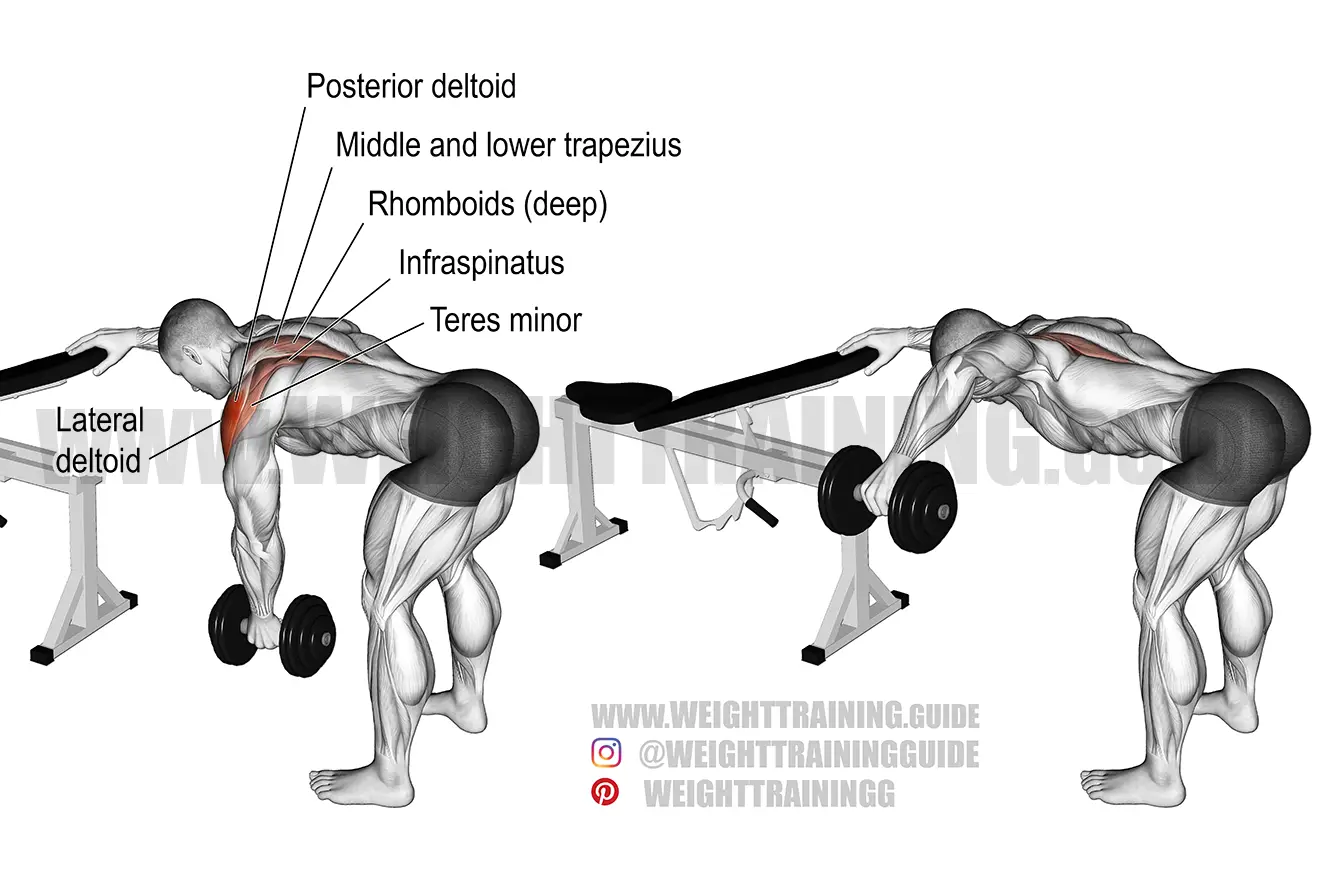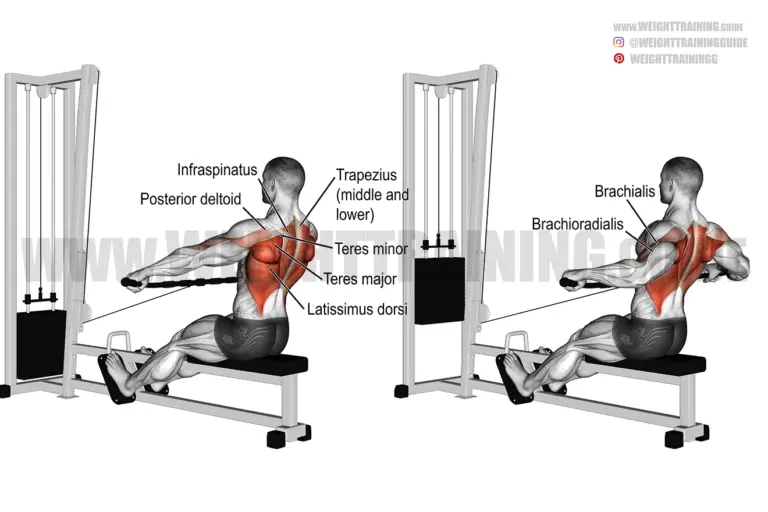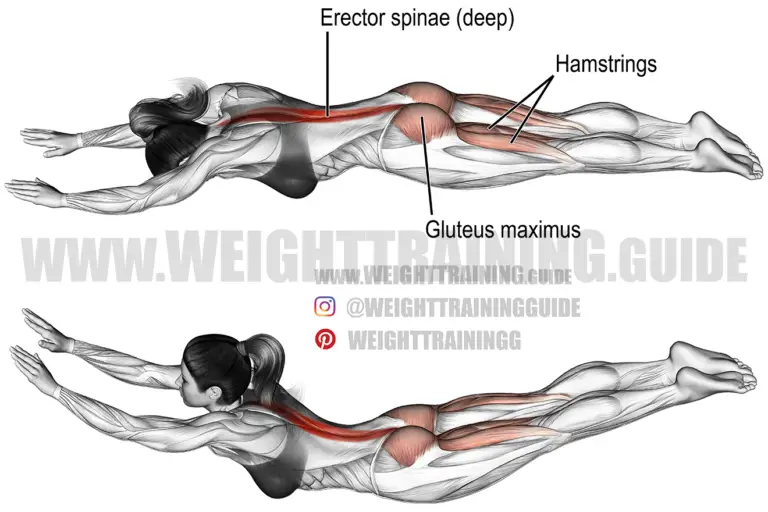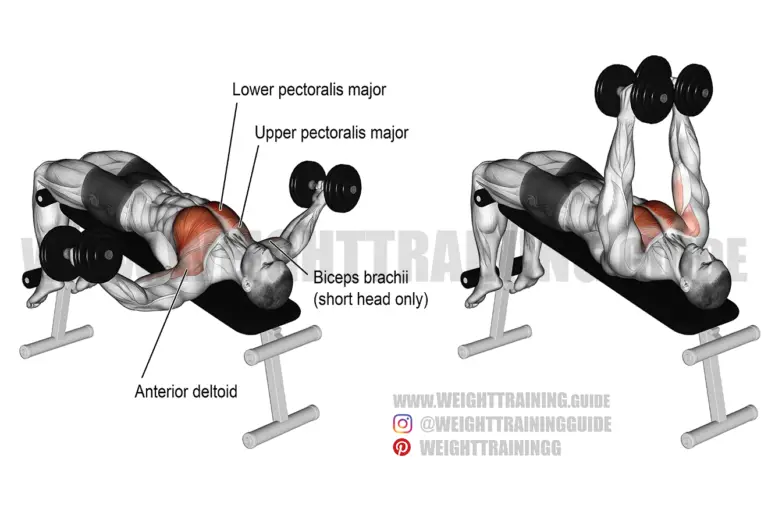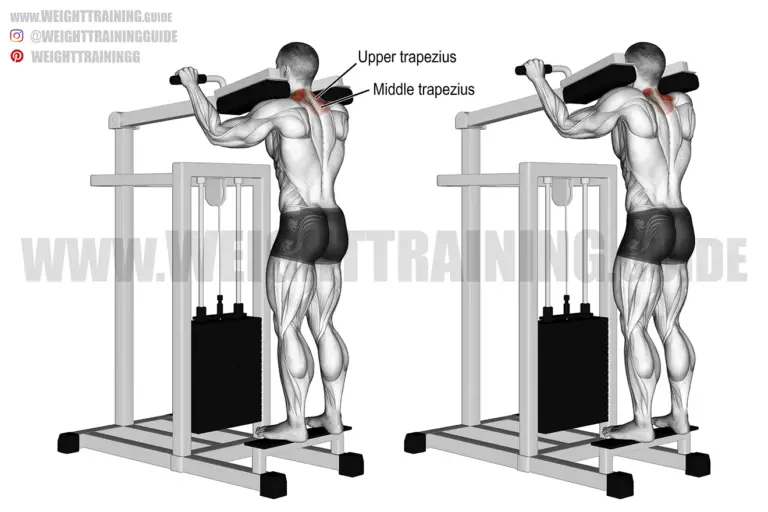One-arm reverse dumbbell fly
Exercise details
- Target muscle: Posterior Deltoid
- Synergists: Lateral deltoid, Infraspinatus, Teres Minor, Rhomboids, Middle and Lower Trapezius
- Mechanics: Isolation
- Force: Pull
Starting position
- Holding a dumbbell in one hand, flex your hips and knees until your torso is parallel to the floor.
- For stability, grasp something stable with your free hand. Your back should be straight and the arm with the dumbbell should be hanging straight down in front of you, with your palm facing inward (neutral grip).
Execution
- Keeping your elbow slightly flexed, exhale as you raise the dumbbell directly out to the side until it is level with the height of your shoulder.
- Hold for a count of two.
- Inhale as you lower the dumbbell to the starting position in a controlled manner.
- Repeat for the prescribed number of repetitions.
- Repeat the exercise with your opposite arm.
Comments and tips
- Keep your back straight and your body still; only your arm should move.
- Keep the movement under full control. Do not swing the dumbbell upward or allow it to drop downward.
- The point of holding on to something stable is to make sure that your body stays still and doesn’t sway up and down. In other words, it prevents you from cheating.
- The more upright your torso is, the more emphasis you will place on your lateral deltoid instead of your posterior deltoid. Therefore, in order to target your posterior deltoid, keep your torso horizontal.
- To avoid the involvement of your latissimus dorsi, keep your upper arm perpendicular to your torso.
- The one-arm reverse dumbbell fly is also known as the one-arm dumbbell rear delt fly, the one-arm dumbbell rear lateral raise and the one-arm dumbbell bent-over lateral raise.
- See also the reverse dumbbell fly, the head-supported reverse dumbbell fly, and the cable face pull.
One-arm reverse dumbbell fly video
Here’s an okay demonstration of the one-arm reverse dumbbell fly. The only problem is that his torso is not horizontal, in which case he is not fully emphasizing his posterior deltoid.

